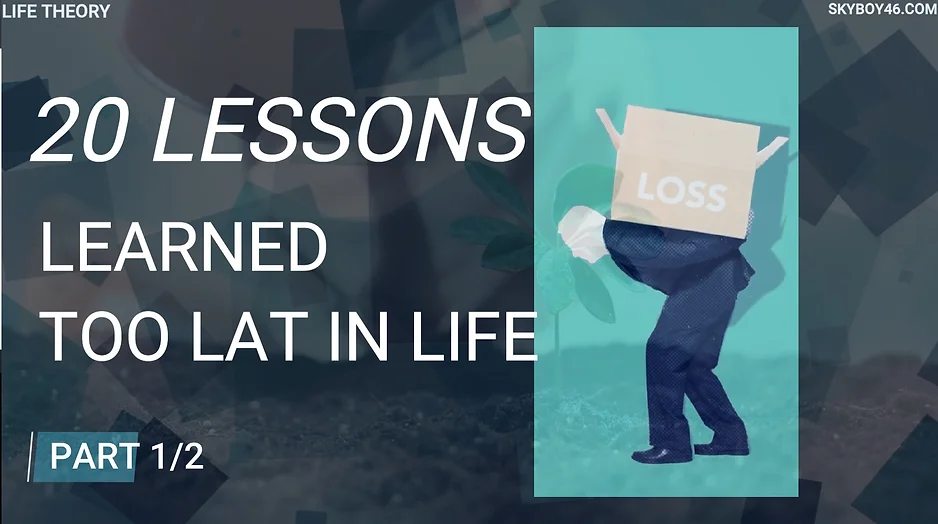Don’t Want To Read?
Watch/Listen To The Full Video on YouTube
Desire is a powerful force, but only when controlled. Dopamine fuels both our cravings and our discipline—learning to balance them is key. Prioritize sleep, sunlight, and the journey itself over instant gratification. Master your impulses, and you’ll master your destiny. What’s one desire you’ll refine today?
SUBSCRIBE: https://www.youtube.com/@LifeTheory46
Harnessing Desire – The Dopamine Duel – Life Stories 242
We’re excited to have you here with us today, ready to delve into another vital insight that can fuel your journey forward. We’re proud of your relentless pursuit of your goals—it’s rare, and it’s something worth celebrating. Now, let’s take the next 10 minutes to focus purely on you, the engine behind all the incredible things you do. The world can wait. These minutes are about sharpening your mind, expanding your focus, and building the mental framework for success.
Today’s topic is all about desire—something so deeply ingrained in the human experience that it drives much of our behavior. Whether it’s that ideal career, the perfect partner, a dream vacation, or even a profound sense of purpose, the vortex of desire is endless. It pulls us toward things both tangible and intangible, and while this drive can propel us toward success, unchecked desire can also drain our energy, pulling us into an exhausting spiral. In this session, we’ll explore how you can take control of your desires by understanding the hidden workings of dopamine, the neurotransmitter at the heart of motivation.
Dopamine is a tiny but mighty player in our brain chemistry. The system it operates within is minuscule—less than 0.0007% of the neurons in your brain are involved in dopamine pathways. Yet, it wields immense influence, especially when it comes to wanting and controlling what we desire. The dopamine system is a four-headed beast, with four major pathways that each serve a different purpose. Today, we’re going to focus on two of them: the pathways that govern desire and the ones that regulate control.
First, let’s paint a clear picture of how dopamine works. When neurons communicate, they release neurotransmitters like dopamine into synapses, the spaces between them. Think of the synapse as a gap between people, where sound carries the message. Dopamine is like words being exchanged in a conversation, except instead of just talking, dopamine excites the neurons, making them fire more. In short, dopamine doesn’t just speak—it commands neurons to pay attention and respond.
Now, dopamine has two roles: it fuels desire, but it also controls desire. Think of it like a city with two governing factions: one that stirs up wants and cravings, and another that oversees and regulates them. These two forces often clash in our brains, driving us toward what we want and, at the same time, attempting to moderate that drive. But here’s the kicker: dopamine doesn’t always manage itself effectively. These two pathways—the “yearning” and the “ruling” heads of dopamine—often pull us in different directions.
The yearning pathway, known as the mesolimbic system, is what makes us crave rewards. It’s the system that fires up when something catches our eye—a new goal, a tempting purchase, or a challenge that promises success. This part of the brain is all about emotional responses, motivation, and the pursuit of pleasure or avoiding fear. But as powerful as it is, the yearning pathway isn’t in charge of control. That’s where the mesocortical pathway comes in, the part of the brain that acts like the CEO, managing executive functions like planning, decision-making, and self-regulation. This pathway helps us think clearly, make decisions, and control our impulses. It’s what keeps us from giving in to every desire.
The key takeaway here is that while both systems are crucial, the control system doesn’t always dominate the desire system. It’s easy to get caught up in the rush of wanting something, and often, the yearning head runs wild while the ruling head struggles to keep up.
So, how do we bring these two forces into balance? How do we harness the power of dopamine to motivate us toward our goals without letting it drive us into a whirlpool of endless wanting?
The first strategy is simple but powerful: get enough sleep. Quality sleep—about seven to eight hours a night—lays the foundation for healthy dopamine levels. When you’re sleep-deprived, your baseline dopamine plummets, which leaves you with lower motivation and diminished self-control. By ensuring that your body is rested, you’re giving your brain the fuel it needs to regulate both desire and control effectively.
The second strategy is sunlight. Expose yourself to natural light for 10 to 20 minutes early in the morning—ideally within the first hour of waking up. This natural light resets your circadian clock, boosting your alertness and optimizing dopamine production. Sunlight is like a natural wake-up call for your nervous system, helping to elevate your dopamine levels and get your brain functioning at its best.
Third, consider caffeine, if you tolerate it well. Studies show that moderate amounts of caffeine—taken about two hours after waking—can enhance dopamine levels, giving you a boost in both motivation and control. However, remember to use it wisely. Too much can lead to diminishing returns, but the right amount can give your dopamine a healthy kickstart.
Next, shift your focus from the final reward to the process itself. This is perhaps one of the hardest but most rewarding strategies. When you focus too much on the end goal, dopamine’s desire system can get frustrated by how far away the reward feels, causing motivation to drop. By learning to enjoy the process—the grind, the effort, the journey—you keep the dopamine system firing steadily, making the pursuit itself more fulfilling and less stressful.
Finally, build confidence in your own abilities. This isn’t about telling yourself you can do anything—that’s unrealistic. But by nurturing a strong belief in your capacity to succeed, you create a feedback loop. Early successes fuel more confidence, which in turn leads to greater achievements. This sense of self-efficacy is a key factor in keeping your dopamine systems balanced, ensuring that you stay motivated without getting overwhelmed by desire.
As we wrap up today’s session, let’s take three deep breaths together. Inhale deeply, hold for a few seconds, and then release. One more time—inhale, hold, and exhale. You’ve done great work today, taking another step toward mastering your desires and controlling your impulses. Keep building that momentum, and remember—every small victory adds up.
And until next time, keep on rising.
–> Read More Life Stories Here:
https://www.lifetheory.us
https://www.lifetheory.eu
Buy all of our Life Stories & Our Premium Learning Packs. Listen or Read to them anytime you want. Have them Forever.
You can get each monthly lesson on our website at https://www.skyboy46.com/store
SHARE THIS STORY
Visit Our Store
SHOP NOW
www.skyboy46.com & www.myskypet.com
Designed For Pet Lovers & Introverted Souls
Sport, Hobbies, Motivation, Music & Art






~EXPLORE MORE~
www.linktr.ee/skyboy46


